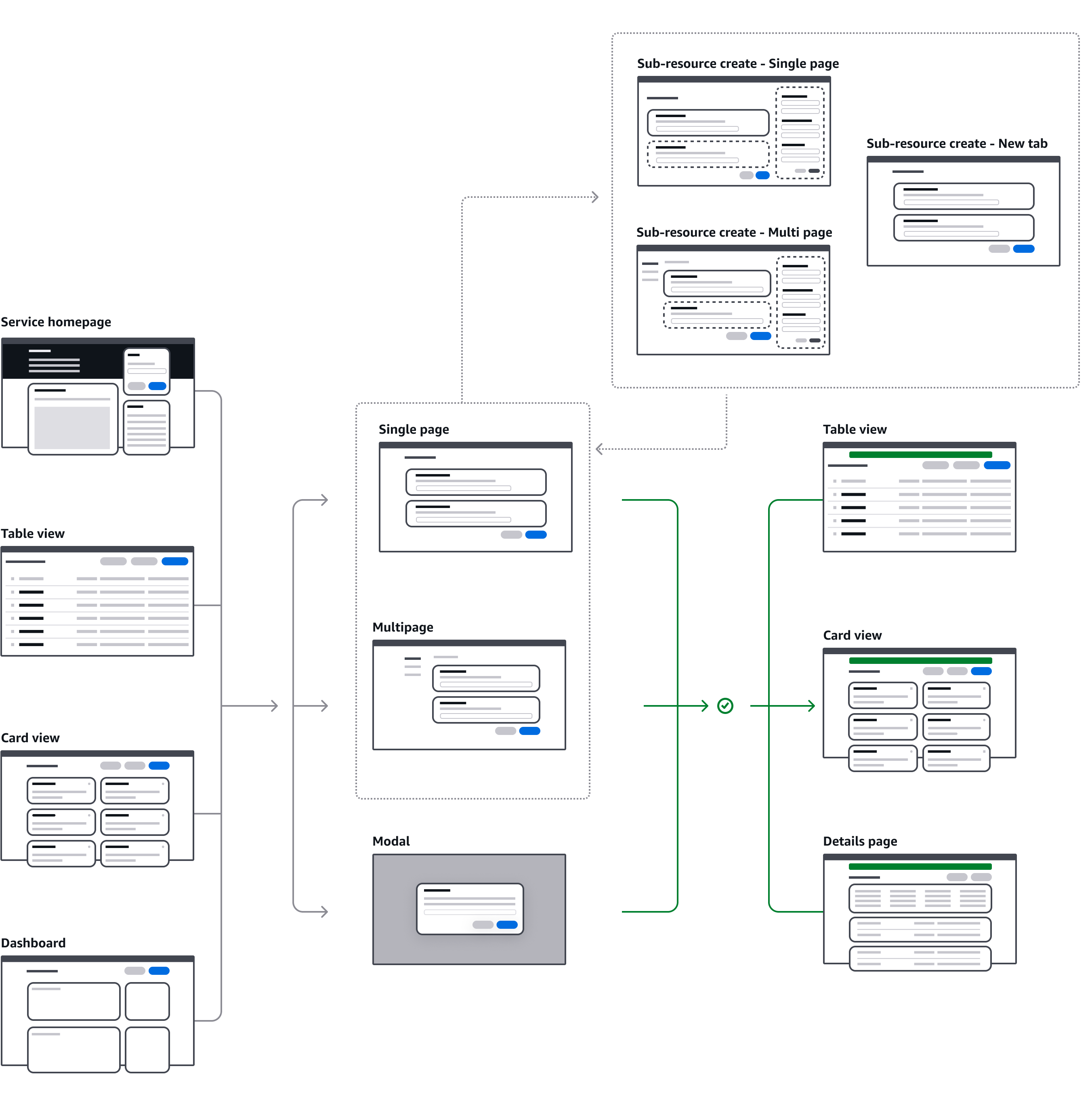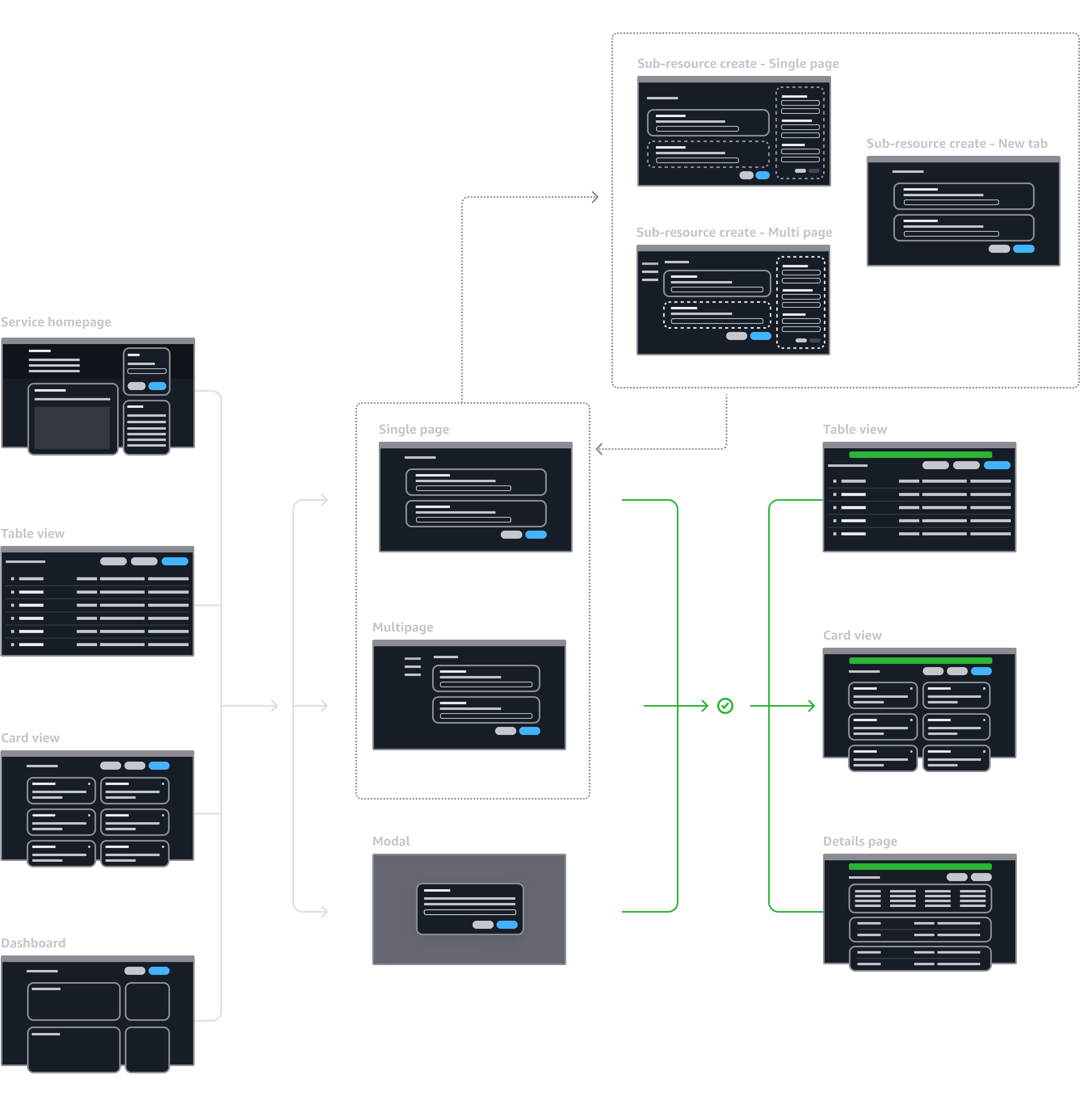Create resource
With the create new resource pattern, users can create new resources.
On this page
Did this page help you?
Tell us more - optional
Create resource patterns and components
Users can create resources from multiple entry points. If it's the user's first time, or a recurrent creation, we provide four solutions.
Single page create
Multipage create
Modal
Sub-resource create patterns
Sub-resource create
Flow charts


Criteria
| Modal | Single page create | Multipage create | |
|---|---|---|---|
| Length | = 1 field | Between 2 and 15 fields in the primary section or up to 5 groups of settings | More than 16 fields in primary sections or more than 5 groups of settings |
| Complexity | Basic text input fields and simple selects | Flow does not require any category to have its own page | Concepts require in-depth interactions that benefit from having their own page |
| Recovery | Input is mutable after creation | Input mutable after creation | Input immutable after creation |
| Error handling | In trigger page | In creation page | In every single step and in summary step |
| Frequency | n/a | Frequent | Infrequent |
| Sub-resource create | No | Yes | Yes |
Length
Deciding how many fields are in the primary section:
Any required field that we can’t provide a good default for (for example, a password).
Any field that 80% or more users would expect to see and want to know the value of in order to be successful (for example, knowing the security group associated with the resource, even when we provide a good default).
All other fields go into the additional configuration section with appropriate defaults.
Some flows have variables that are based on what the user chose in a previous step. The total number of fields should be considered for the longest possible variation of your form.
Complexity
Complexity refers to the types of interactions in your flow. In some cases, interactions are complex enough that having their own page will make it easier for users to complete and make better decisions.
Recovery
For configurations that allow or disallow a correction or modification without creating a new one.
Error handling
Where in the flow errors can be caught, so the user can modify them in context.
Frequency
Only use frequency as a criterion if you’re unsure which pattern to use.
Sub-resource create
Sub-resources are either dependencies or optional enhancements used to complete the parent resource creation. For example, adding roles, policies, or security groups to an EC2 instance. These can be selected from existing options or, created and then added. Sub-resources may be owned by the same service or require cross-service creation. Follow the guidelines for sub-resource create.